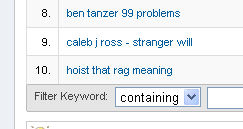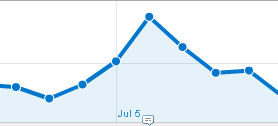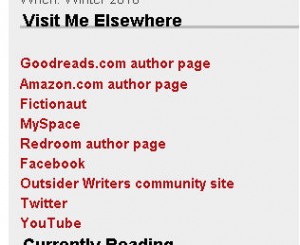Search Engine Optimization (SEO) for Authors

During a recent discussion on NPR, Heather Fain, marketing director for the publisher Little, Brown and Co. said that “the greatest marketing tool we have in publishing — and probably will never change — is word of mouth.” This means not only literal friend-to-friend and bookseller-to-buyer hand selling, but also online forums, reviews, blog comments, and social network discussion. For the most part, authors have little control over this. One aspect authors can control: the old fashioned website.
Optimizing a website so that it can be more easily found by readers is to most authors, I would assume, a foreign concept. Not that I am discrediting authors; I simply hope that most of you aren’t as nerdy as I am. Having a platform (re: a stable of willing buyers) is becoming more and more important to publishers. Optimizing your web presence is an important way to grow that platform.
Many of the SEO (Search Engine Optimization) best practices for commercial sites are relevant when working with a personal site. Keyword-rich content, meta development, inlinks, all of these things are important. However, there are some major differences to consider. I’ll be focusing on those differences.
First, determine the purpose of your website. Is it to covert sales? Is it rack up a long list of newsletter subscribers? Is it to provide general awareness of yourself and your books? Most of you are likely part of the third item—most book sales will happen off-site, at either an online book store or through a brick-and-mortar store; and newsletters, though highly converting [1], are generally geared more toward e-commerce consumers and repeat consumers. There is a place for all three of these items in a single website, of course, but I’m going for focus in this already lengthy post.
Monitoring Traffic
You need a way to analyze your website traffic. I recommend Google Analytics because it is free, extremely robust (intimidating so), and super easy to incorporate. If you can’t measure your site’s performance, you’ll never know if you efforts are truly working. Some free blog sites don’t allow Javascript (which Google Analytics uses), but in those cases the blogging platform usually has a rudimentary traffic measuring application already built in.
Keywords
Think of keywords as the terms used to find a website. For example, someone may type Hoist That Rag meaning and end up seeing my page in the Google search results. And in fact, they did:

Using Google Analytics, I can see what terms people searched to find my site. I recommend expanding your keyword set using these terms as a guide. For example, using the term Hoist That Rag meaning, I could imagine that people coming to my site might be interested in Tom Waits, Tom Waits Lyrics, and perhaps more generally, downtrodden, crooner, barfly personas. Additionally, keywords that searchers may not have used, but ones you feel are relevant to your site, are worth considering. For example, nobody came to my site using the term “grotesque noir fiction,” but I may want them to. I’ll add that to my list.
So, what to do with this keyword knowledge…
Content
By “content” I am going to be focusing on blogs. Individual page content, such as your bio, about, and work pages should be filled with keyword rich content, but blogs offer a more consistent stream of new content, which search engines (and readers) love.
Write blog posts that blend what you want to say with what you know people have already searched for. Keeping the examples above, I could write posts about barflies, Tom Waits, and perhaps how many of his lyrics feel like grotesque noir (“Eyeball Kid” comes to mind). The basic idea is to give search engines as many opportunities to validate your site in the eyes of readers.
Search engines put a strong focus on in-bound links (re: links from other sites to yours). When content is created specifically to attract links, this is called link bait. So how can you use your site’s past performance to anticipate link bait opportunities? I’ll use an example from my site to illustrate.
On July 6th, I noticed a spike in site traffic. Upon digging into my analytics, I found that a recent post, “Great Unexpected Literary References,” which highlights literary references in cartoons, managed to be linked to by a couple moderately popular literary blogs.

To capitalize on potential continued interest in this type of content, I then created more content with similar ideas. And in fact I started an Unexpected Literary References category for this very purpose. It continues to be a fairly popular category (in terms of my site’s overall traffic).
Content is great for bringing readers to you, but what about getting your content in other places?
This is part of what is called off-site optimization…
Community participation
Getting content and in-links is important to search engines, but don’t forget that you are blogging for human readers. Comment on other blogs, join forums, follow authors on Twitter, friend authors on Facebook, but above all, be active. Involve yourself in the online literary community. This is good practice, even if you don’t have a site to promote.
Basically, by proving your love to other humans, as a byproduct, you will be proving your worth to search engines. Each LEGITIMATE link you put out there is another rung in your search engine ranking ladder (notice the word LEGITIMATE; spamming is bad, search engines are smart about penalizing you for spammy links, and humans are smart about blacklisting shits who throw irrelevant links all over the web).
But you only have so many hours in the day, you say…
Be your own Press Release distributor
Use RSS to import your blog feeds into your various social networking and profile pages. Goodreads, Amazon, and Facebook, for example, allow authors to have their blog posts automatically posted to profiles. This means that you hit “post” once at your own blog, and your content feeds to those various other networks.
Be sure to cross-link all of your profile pages and your website. If possible, list your Twitter, Goodreads, Facebook, YouTube, Fictionaut, and all the other social pages you maintain on all of those various networks. Sometimes, you are only allowed one site link. In this case, I would recommend listing your website. A close second would be your Facebook profile.
 |
 |
Measuring conversions
Since most author pages aren’t focused on product conversions (purchases usually take place off-site, at an Amazon.com or independent bookseller like Kansas City’s Rainy Day Books) it doesn’t make sense to focus on actual product sales as a measure of performance. If looking to measure conversions, a newsletter sign up or comment submission may be more appropriate. Think of yourself as being in the business of establishing a relationship, not in the business of bookselling. Google Analytics has a built in method of tracking conversions.
(Note: for those of you already familiar with SEO, you will notice that I didn’t include anything about meta content, title tags, <h> tags, and other behind-the-scenes tactics. I avoided these simply to keep this article focused. I may touch on them in the future)
[1] ExactTarget is an email marketing company, so be weary of fully embracing these numbers.


Great stuff, Caleb. I’m going to re-read this a couple times.
Very useful info, thanks. And yet another opportunity to get your name aligned with Tom Waits in the eyes of the spiders.
Thanks for this , Caleb! I look forward to reading more of your posts on SEO.